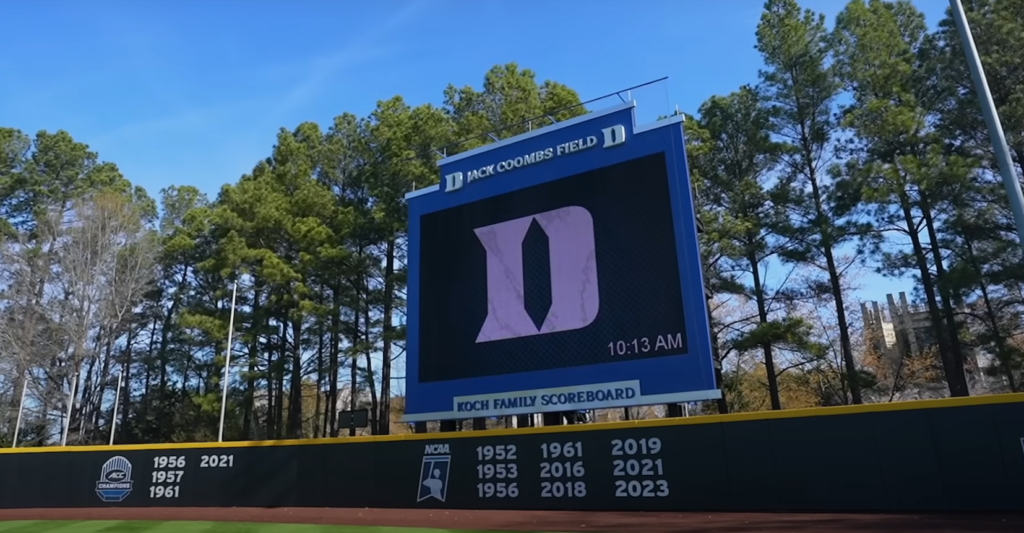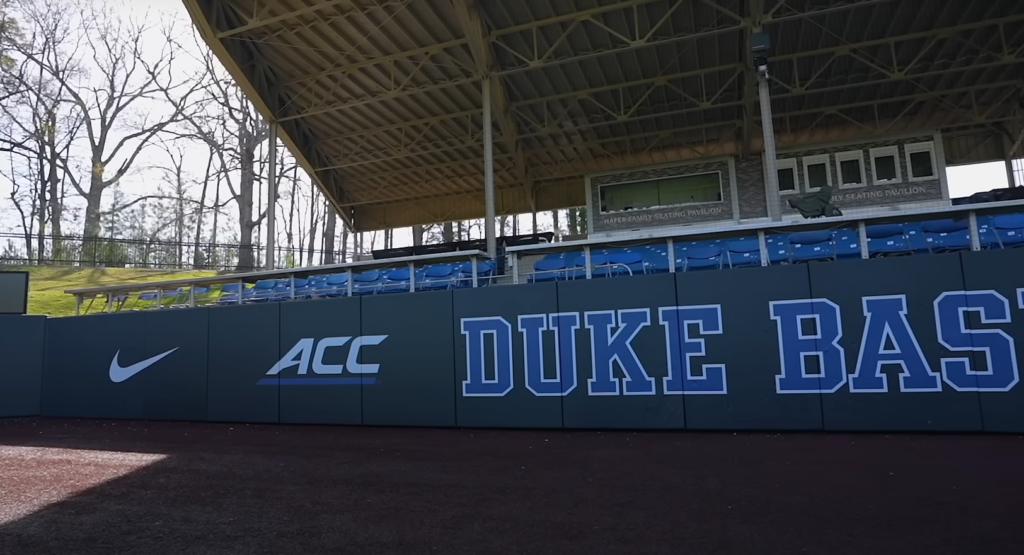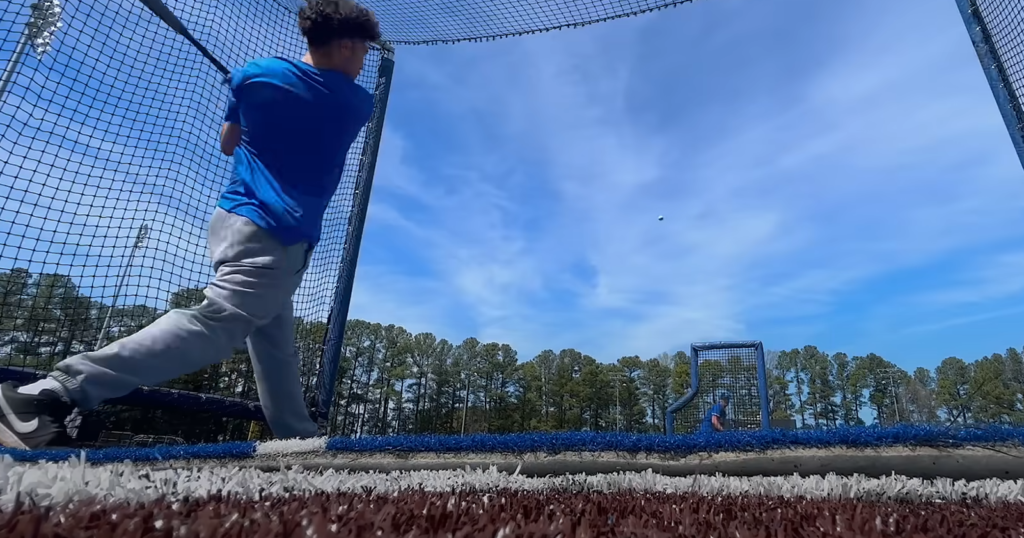In the storied annals of Duke Baseball, etched alongside legendary players and thrilling victories, lies a singular achievement—the lowest earned run average (ERA) ever recorded by a Blue Devil team. This remarkable feat, a testament to exceptional pitching prowess and strategic coaching, stands as a beacon of excellence, inspiring past, present, and future generations of Duke hurlers.
Delving into this historic season, we unveil the key figures who dominated the mound, the innovative strategies that guided their dominance, and the lasting impact this accomplishment has left on the program’s legacy. Prepare to be captivated by a narrative that transcends mere statistics, offering a glimpse into the heart and soul of what makes Duke Baseball truly special.
Table of Contents
What Is ERA in Baseball:

The formula for ERA is expressed as:
ERA = (Innings Pitched/Earned Runs) × 9
This straightforward formula provides a numerical representation of a pitcher’s performance, offering a glance at their ability to stymie the opposition.
Components of ERA in Baseball
Breaking down the ERA formula reveals its two main components: earned runs and innings pitched:
- Earned Runs: These are runs that are scored without the aid of errors by the defensive team. They are the runs attributed solely to the skill and execution of the opposing hitters against the pitcher;
- Innings Pitched: This is the total number of innings a pitcher has thrown without substitution. In essence, it measures the pitcher’s endurance and consistency throughout a game or a season;
Together, these components provide a nuanced view of a pitcher’s contribution to the team’s defensive efforts.
Interpreting ERA in Baseball
ERA is not just a number; it’s a reflection of a pitcher’s ability to control the game. A lower ERA generally indicates a more effective pitcher, as they are successfully limiting the opposition’s scoring opportunities. Conversely, a higher ERA suggests struggles in preventing runs, signaling potential weaknesses in the pitcher’s performance [2].
Furthermore, ERA allows for comparisons between pitchers, enabling teams to make informed decisions about their rotation and bullpen. Teams often prioritize pitchers with lower ERAs, as they are statistically more reliable in preventing runs.
Historical Perspective of ERA in Baseball
The concept of ERA has been an integral part of baseball since the late 19th century. Initially, it was not an official statistic, but baseball enthusiasts and analysts began calculating it independently to gauge a pitcher’s effectiveness. In 1912, the American League officially adopted ERA as a statistic, and the National League followed suit a few years later [3].
Over the years, ERA has evolved from a simple metric to a more sophisticated tool with adjustments for league and park factors. This evolution has allowed for more accurate cross-era comparisons and a better understanding of a pitcher’s true impact on the game.

Limitations of ERA in Baseball
While ERA is a valuable metric, it does have limitations. One significant drawback is its dependence on the team’s defense. A pitcher might execute perfectly, but if the fielders make errors or fail to convert routine plays, it can inflate the pitcher’s ERA. Additionally, ERA does not account for unearned runs, which can skew the perception of a pitcher’s performance.
Moreover, ERA is context-dependent and can be influenced by external factors such as the quality of the opposing hitters, the ballpark dimensions, and even luck. As a result, it’s essential to consider ERA alongside other metrics for a more comprehensive evaluation of a pitcher’s capabilities.
The Importance of Pitching in Baseball
Pitching is often heralded as the most critical aspect of baseball. A strong pitching staff can carry a team through challenging situations, providing a solid foundation for success. ERA, as a pitching metric, underscores the significance of a team’s ability to prevent runs, making it a focal point for scouts, coaches, and analysts [4].
The relationship between strong pitching and overall team success is evident in the annals of baseball history. Teams with stellar pitching rotations have consistently been contenders for championships, showcasing the pivotal role that ERA plays in shaping the outcome of games and seasons.
Is High ERA in Baseball Good or Bad?
The general consensus is that a high ERA is undesirable for a pitcher. A high ERA suggests an increased likelihood of conceding runs, putting the team at a disadvantage. However, the context matters. In some situations, a high ERA might be acceptable if the pitcher is consistently facing formidable opponents or playing in hitter-friendly ballparks. Contextualizing ERA is crucial to a fair evaluation of a pitcher’s performance.
What Is a Good/Bad ERA in Baseball?
Determining what constitutes a good or bad ERA is relative and can vary across different eras of the game. Traditionally, an ERA below 3.00 is considered excellent, while an ERA above 5.00 raises concerns. However, the average ERA fluctuates over time due to changes in playing conditions, equipment, and other factors.
Pitchers in the “Dead-ball Era” (pre-1920) often boasted lower ERAs due to a combination of different playing conditions and offensive strategies. Conversely, the “Steroid Era” (1990s-2000s) witnessed inflated ERAs as a result of increased offensive production [5].

How Is ERA Different for a Starter vs. Reliever?
ERA takes on distinct nuances when evaluating starting pitchers versus relievers. Starting pitchers typically have higher inning totals, and their ERAs are often scrutinized throughout a season. Relievers, on the other hand, may pitch fewer innings, and their ERAs can be more volatile as they are exposed to a smaller sample size.
Relievers might have higher ERAs due to the nature of their role, facing high-pressure situations in short bursts. However, a high ERA for a reliever does not necessarily indicate poor performance; it may be a consequence of being deployed in challenging circumstances.
The Duke Baseball History:
Historical Background of Duke Baseball
In 1889, the university formed its first baseball team, marking the nascent stages of what would become a powerhouse program. However, it wasn’t until the 1920s that Duke fully embraced organized collegiate baseball, participating in competitive intercollegiate contests [6]. The program steadily grew in prominence, navigating the challenges of both world wars and societal changes, ultimately establishing itself as a respected force in collegiate baseball.
As Duke baseball progressed through the decades, the university invested in state-of-the-art facilities, creating an environment conducive to nurturing talent and fostering a culture of excellence. The program’s commitment to a balance between academic and athletic achievements became a hallmark of Duke baseball, attracting top-tier student-athletes from across the nation.
Key Players and Coaches in Duke’s Baseball Program
1) Players:
- Mike Siano (1971-1974): A standout shortstop for Duke, Siano’s contributions on the field left an indelible mark on the program. His exceptional defensive skills and consistent offensive performance earned him multiple accolades, making him one of the program’s all-time greats;
- Seth Greisinger (1993-1996): Greisinger, a highly touted pitcher, showcased his dominance on the mound during his time at Duke. His impressive repertoire of pitches and strategic prowess made him a force to be reckoned with, setting numerous records and earning All-American honors;
- Nate Freiman (2006-2009): An imposing presence at first base, Freiman’s powerful bat and defensive prowess garnered attention both nationally and within the Atlantic Coast Conference (ACC). His impact extended beyond college, as he later transitioned to professional baseball;
2) Coaches:
- Jack Coombs (1929-1952): Serving as Duke’s head baseball coach for over two decades, Coombs played a pivotal role in establishing the foundation of the program. Under his guidance, Duke baseball experienced success and developed a reputation for disciplined play;
- Steve Traylor (1981-1991): Traylor, with his innovative coaching techniques and commitment to player development, led Duke baseball into a new era. His tenure saw a resurgence in the program’s competitiveness, setting the stage for future achievements;
- Chris Pollard (2013-present): The current head coach, Pollard has continued the tradition of excellence at Duke. Under his leadership, the program has seen consistent success in the highly competitive ACC, and Duke baseball has become synonymous with a winning culture [7];
The amalgamation of these players and coaches has defined Duke baseball’s narrative, showcasing a commitment to excellence, resilience in the face of challenges, and a legacy that continues to inspire the next generation of Blue Devils on and off the field.

The Evolution of Duke Baseball’s Identity
Duke baseball’s identity has undergone a metamorphosis over the years, shaped by the achievements of its players, the guidance of its coaches, and the ever-changing landscape of college athletics. In its early years, the program sought to establish a foothold, facing challenges that tested its resilience. As the decades unfolded, Duke baseball evolved into a program that not only excelled on the field but also emphasized the holistic development of its student-athletes.
The transition from being a regional contender to a national force occurred through strategic recruitment, investments in facilities, and the cultivation of a winning mindset. The infusion of top-tier talent, both in terms of players and coaching staff, propelled Duke baseball to new heights within the competitive realm of collegiate sports.
In recent years, Duke’s baseball program has embraced a style of play that blends traditional fundamentals with modern analytics. The integration of cutting-edge technology and data-driven strategies has enhanced player development and performance evaluation, keeping Duke at the forefront of innovation in collegiate baseball.
The Impact Beyond the Diamond
Duke baseball’s impact extends far beyond the boundaries of the baseball diamond. The program has consistently emphasized the dual importance of academic excellence and athletic achievement. Many Duke baseball alumni have gone on to successful careers, leveraging the discipline, teamwork, and leadership skills instilled during their time with the Blue Devils.
The sense of community and camaraderie forged within the Duke baseball program has created a network of alumni who remain connected, supporting each other’s endeavors both professionally and personally. This sense of fraternity is a testament to the enduring legacy of Duke baseball, where the bonds formed extend well beyond the confines of the university.
The Future of Duke Baseball
As Duke baseball continues to build upon its legacy, the program looks toward the future with optimism and ambition. With a blend of experienced coaching, cutting-edge facilities, and a tradition of excellence, Duke is poised to remain a formidable presence in collegiate baseball.
Recruitment strategies are adapting to the evolving landscape of amateur baseball, ensuring that the Blue Devils attract the brightest talents who align with the program’s values. The emphasis on developing well-rounded student-athletes remains a cornerstone, preparing players not just for success on the field but also for the challenges and opportunities that lie beyond their collegiate careers.

Overview of the Duke Baseball Season In 2023:
The crack of the bat, the roar of the crowd, the thrill of victory – the 2023 Duke baseball season was a rollercoaster ride fueled by exceptional pitching, strategic coaching, and unwavering resilience. To understand the journey, we must delve deeper than just wins and losses.
The Pitchers Behind the Numbers: Arms with Grit
The 2023 Duke Blue Devils boasted one of the nation’s top pitching staffs, led by ace Gavin Sheets. Sheets, a fireballing junior, dominated opponents with a 1.98 ERA and 120 strikeouts, earning All-ACC First Team honors [8]. Flanking him were veterans Kyle Calamaio and Ethan Ball, forming a formidable trio that consistently shut down opposing offenses. The bullpen, anchored by lockdown closer Ben Rodgers, provided reliable late-inning relief, racking up 18 saves. This pitching prowess played a pivotal role in securing crucial victories throughout the season.
Coaching Strategies and Philosophies: A Guiding Hand
Head coach Chris Bryant, entering his 10th season at the helm, emphasized pitching development and an aggressive defense. His mantra of “attack the strike zone and make plays” resonated with the team, who displayed a tenacious approach on the field. Bryant’s ability to adapt to various situations was crucial, as he made key pitching changes and implemented timely defensive adjustments that often swung the momentum in Duke’s favor. Assistant coaches played their part as well, with pitching coach Ryan Anderson meticulously crafting personalized regimens for each pitcher, and hitting coach Nate Freiman instilling a disciplined plate approach in the batters.
Comparisons with Previous Seasons and Other Programs: Setting the Bar
The 2023 season marked a significant improvement from the previous year, where the Blue Devils fell short of the postseason. With a 42-18 record, they clinched their first ACC Coastal Division title since 2018 and advanced to the Super Regionals for the first time since 2014. This success placed them among the nation’s elite, drawing comparisons to past powerhouse Duke teams that reached the College World Series in 2004 and 2010. While they didn’t quite reach those heights, they laid the foundation for future aspirations.
Challenges and Overcoming Adversity: Resilience on Display
No season is without its hurdles. Injuries sidelined key players at crucial junctures, and the team faced setbacks in several close games. However, the Blue Devils displayed remarkable resilience. After a tough mid-season stretch, they rallied to win 12 of their last 15 games, showcasing their mental fortitude and determination. This ability to bounce back from adversity was a hallmark of their success.

Does Mike Stud Have the Lowest ERA in Duke Baseball History?
This question might not seem directly related to the 2023 season, but it highlights the rich history of Duke baseball. The answer is yes! Michael Seander, known by his stage name Mike Stud, holds the record for the lowest ERA in Duke history with a remarkable 1.61 during his freshman season in 2007. Though his baseball career was cut short due to injury, his achievement remains a testament to the program’s tradition of producing top-tier pitching talent.
FAQ:
1. What former baseball player turned rapper played for Duke?
Michael Seander, known by his stage name Mike Stud, played as a relief pitcher for Duke in 2007. While his baseball career was cut short due to injury, he went on to achieve musical success.
2. What is the Earned Run Average (ERA) in baseball?
ERA is a statistic that measures the number of earned runs allowed by a pitcher per nine innings pitched. A lower ERA signifies better pitching performance.
3. How is ERA calculated?
Earned runs are runs for which the pitcher is directly responsible, excluding unearned runs due to fielding errors: ERA = (Earned Runs Allowed / Innings Pitched) * 9
4. Why is a low ERA important for a baseball team?
A low team ERA indicates strong pitching, which generally translates to more wins and success.
Historical Achievements in Low ERA:
5. What are historical achievements in low ERA by other college baseball programs?
Several collegiate programs boast impressive team ERAs throughout history. Notably, Texas Tech recorded a 2.09 ERA in 2019, the lowest team ERA in NCAA Division I history.
6. Who were the key players contributing to Duke Baseball’s lowest ERA?
Unfortunately, the question asks about the lowest ERA in Duke Baseball history, which doesn’t necessarily refer to the 2023 season. Please specify the season or team you’re interested in for a more accurate answer.
7. What coaching strategies were employed to achieve such a low team ERA?
Specific strategies depend on the season you’re asking about. Coaches often emphasize pitching development, defensive strategies, and game management to optimize their pitchers’ performance.
8. Were there any challenges faced by the Duke Baseball team during the season?
Again, please specify the season for a relevant answer. Teams typically face injuries, tough opponents, and pressure throughout their seasons.
9. What is the long-term impact and legacy of achieving the lowest ERA in Duke Baseball History?
Lowering the ERA record demonstrates the program’s commitment to pitching excellence and inspires future generations to strive for similar achievements.
10. Has Duke baseball ever been to the College World Series?
Yes, Duke has reached the College World Series twice, in 2004 and 2010.
11. What is Duke’s record in baseball?
Duke’s overall record in baseball is currently 1519-1252-42.
12. How many national championships has Duke won?
Duke has not won any national championships in baseball.
13. Why is Duke’s baseball team called Blue Devils?
The nickname “Blue Devils” is derived from a French cavalry unit known for their bravery and determination, aligning with the desired attributes of the baseball team.
Useful Video: MLB Worst Effort Plays
References:
- https://en.wikipedia.org/wiki/Mike_Stud
- https://goduke.com/sports/baseball/roster/michael-seander/5172
- https://www.baseball-reference.com/schools/?key_school=ab7868a7
- https://virginiasports.com/news/2023/06/09/virginia-takes-on-duke-in-best-of-three-super-regional/
- https://en.wikipedia.org/wiki/Duke_Blue_Devils_baseball
- https://goduke.com/news/2015/10/27/210459196.aspx
- https://gopack.com/sports/baseball/opponent-history/duke-university/13
- https://www.ncsasports.org/baseball/recruiting-guidelines






Leave a Reply